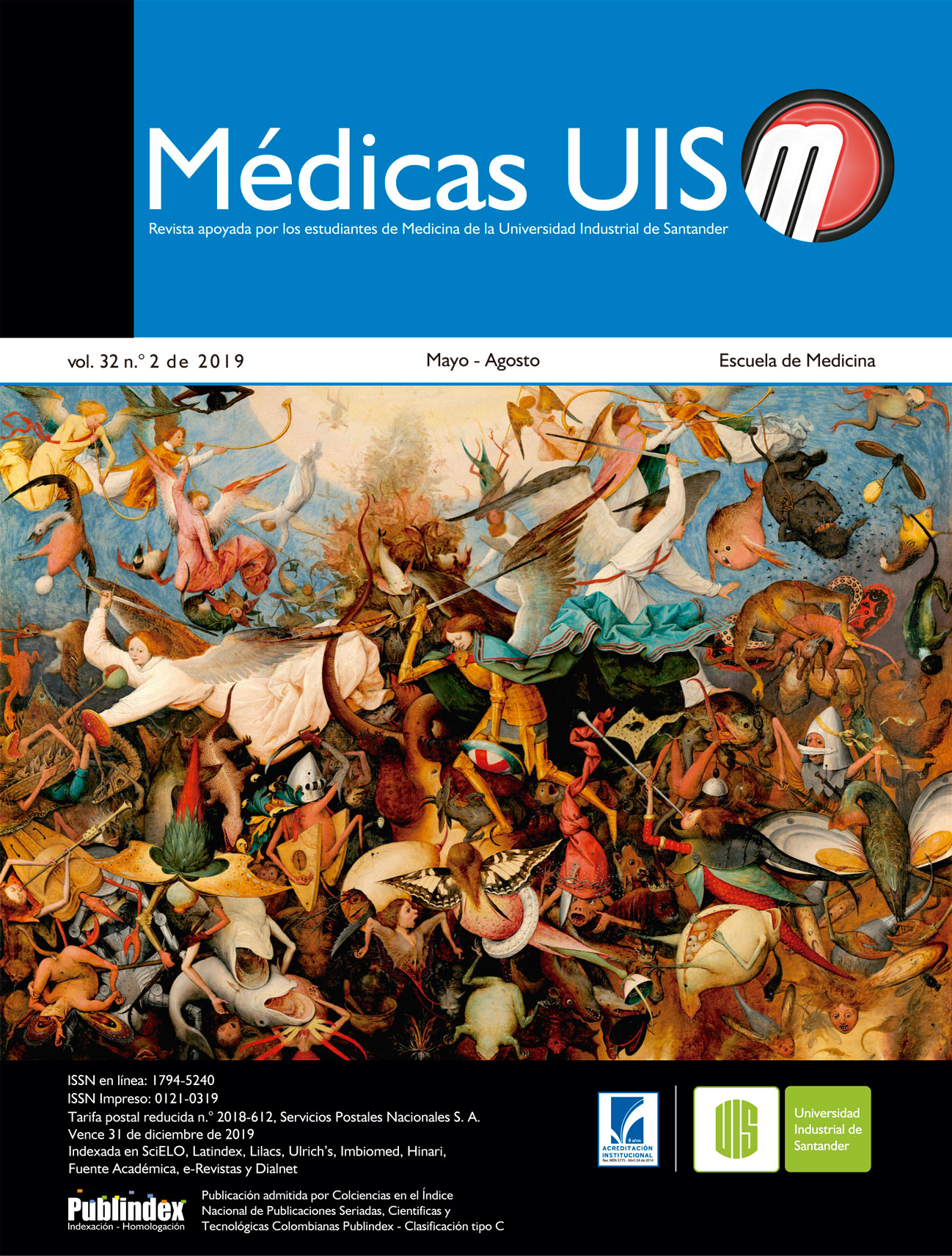Abstract
Stroke in young adults is a rare event present in less than 5% of cases worldwide, representing a diagnostic challenge due to the multiple possible etiologies, including infections. 15% to 40% of patients with untreated syphilis may develop tertiary syphilis; with mainly neurodestructive manifestations, described in late syphilis, but in its early stage with chronic meningitis and meningovascular stroke. The case of a 40-year-old male patient with a history of behavior changes, auditory hallucinations and insomnia is presented, who consults the emergency department for presenting right hemiplegia, motor aphasia, palmoplantar lesions and rosette in glans associated with inguinal adenopathies. Given the imaging and cerebrospinal fluid findings, a diagnosis of ischemic stroke of the left anterior cerebral circulation was established, secondary to meningovascular neurosyphilis, with confirmation of immunosuppression due to human immunodeficiency virus. MÉD.UIS.2019;32(2):53-8
References
2. Stack CA, Cole JW. A Diagnostic Approach to Stroke in Young Adults. Curr Treat Options Cardiovasc Med. 2017;19(11):84. doi:10.1007/s11936-017-0587-6
3. Putaala J. Ischemic stroke in the young: Current perspectives on incidence, risk factors, and cardiovascular prognosis. Eur Stroke J. 2016;1(1):28-40. doi:10.1177/2396987316629860
4. Romero L, Cigarruista Y, Mackay P, Sánchez R, Serrano A, Vega I et al. Factores asociados a enfermedad cerebrovascular en adultos. Rev Médico Científica. 2013;2(26):39-48. www. revistamedicocientifica.org. Accessed July 24, 2019.
5. Observatorio Nacional de Salud. Carga de enfermedad por enfermedades crónicas no transmisibles y discapacidad en Colombia. Informe técnico. Ministerio de Salud. Biblioteca Digital. doi:ISSN: 2346-3325
6. Chraa M, Louhab N, Kissani N. Stroke in young adults: about 128 cases. Pan Afr Med J. 2014;17:37. doi:10.11604/ pamj.2014.17.37.3226
7. Peeling RW, Mabey D, Kamb ML, Chen X-S, Radolf JD, Benzaken AS. Syphilis. Nat Rev Dis Prim. 2017;3(1):17073. doi:10.1038/ nrdp.2017.73
8. Newman L, Rowley J, Vander Hoorn S, et al. Global Estimates of the Prevalence and Incidence of Four Curable Sexually Transmitted Infections in 2012 Based on Systematic Review and
Global Reporting. Meng Z, ed. PLoS One. 2015;10(12):e0143304. doi:10.1371/journal.pone.0143304
9. Singh AE, Romanowski B. Syphilis: review with emphasis on clinical, epidemiologic, and some biologic features. Clin Microbiol Rev. 1999;12(2):187-209. http://www.ncbi.nlm.nih.gov/ pubmed/10194456. Accessed July 24, 2019.
10. Chen M-H, Lin C-C, Lin T-Y, Sung Y-F. Neuro-syphilis, HIV infection and brainstem infarction. QJM. 2013;106(11):10391040. doi:10.1093/qjmed/hct125
11. Golden MR, Marra CM, Holmes KK. Update on Syphilis. JAMA. 2003;290(11):1510. doi:10.1001/jama.290.11.1510

This work is licensed under a Creative Commons Attribution 4.0 International License.
Copyright (c) 2019 Médicas UIS
